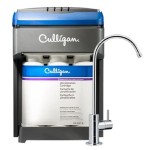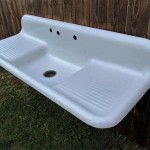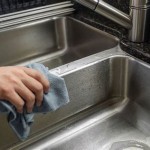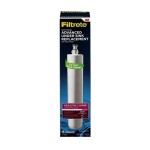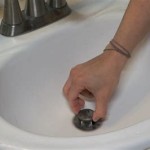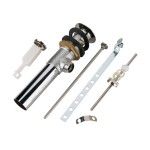P Trap For Kitchen Sink
A P-trap is a plumbing fixture that is installed under a sink to prevent sewer gases from entering the home. It is a U-shaped pipe that traps water, which creates a barrier that prevents the gases from escaping. P-traps are typically made of PVC or ABS plastic, and they are available in a variety of sizes to fit different sinks.
When choosing a P-trap for a kitchen sink, it is important to consider the size of the sink and the type of drainpipe that is being used. The P-trap should be large enough to handle the flow of water from the sink, and it should be compatible with the type of drainpipe that is being used. P-traps are available in a variety of styles, so it is important to choose one that will match the décor of the kitchen.
Installing a P-trap is a relatively simple process. The first step is to remove the old P-trap, if there is one. The next step is to clean the drainpipe and the underside of the sink. The new P-trap should then be assembled and attached to the drainpipe. The final step is to tighten the nuts that hold the P-trap in place.
P-traps are an important part of any plumbing system. They help to prevent sewer gases from entering the home, and they can also help to prevent clogs. By choosing the right P-trap for a kitchen sink, it is possible to ensure that the sink will function properly and that the home will be protected from sewer gases.
Types of P-Traps
There are several different types of P-traps available, each with its own advantages and disadvantages. The most common type of P-trap is the S-trap. S-traps are simple to install and maintain, and they are relatively inexpensive. However, S-traps can be prone to clogging, and they can also be difficult to clean. Another type of P-trap is the J-trap. J-traps are more difficult to install than S-traps, but they are less likely to clog. J-traps are also easier to clean than S-traps.
Another type of P-trap is the bottle trap. Bottle traps are more expensive than S-traps or J-traps, but they are also more durable and less likely to clog. Bottle traps are also easier to clean than S-traps or J-traps.
Choosing the Right P-Trap
When choosing a P-trap for a kitchen sink, it is important to consider the following factors:
- The size of the sink
- The type of drainpipe that is being used
- The style of the kitchen
- The budget
By considering these factors, it is possible to choose the right P-trap for a kitchen sink that will meet the needs of the homeowner.
Installing a P-Trap
Installing a P-trap is a relatively simple process. The first step is to remove the old P-trap, if there is one. The next step is to clean the drainpipe and the underside of the sink. The new P-trap should then be assembled and attached to the drainpipe. The final step is to tighten the nuts that hold the P-trap in place.
It is important to make sure that the P-trap is installed correctly. If the P-trap is not installed correctly, it can leak or clog. By following the steps above, it is possible to install a P-trap correctly and ensure that the sink will function properly.

Oatey 1 2 In White Plastic Sink Drain P Trap Hdc9704b

Kitchen Sink Double Bottle Waste P Trap Drain Transpa

How To Install A Plastic Kitchen P Trap

Plumbing Better Choice For A Kitchen Sink P Trap Abs And Cemented Joints Or Polypropylene Slip Home Improvement Stack Exchange

The Best Way To Clean A Sink P Trap Bell Brothers

Plumbing Kitchen Sink P Trap Installation Advice Home Improvement Stack Exchange

Oatey 1 2 In Clear Plastic Sink Drain P Trap C9705

Kitchen Sink P Trap 40mm 1 5 Inch

Plumbing Is My Sink P Trap Too Low Home Improvement Stack Exchange

Pepte Eu 115mm Single Space Saving Kitchen Sink Drain Waste P Trap Set Dish Washer Input
See Also
